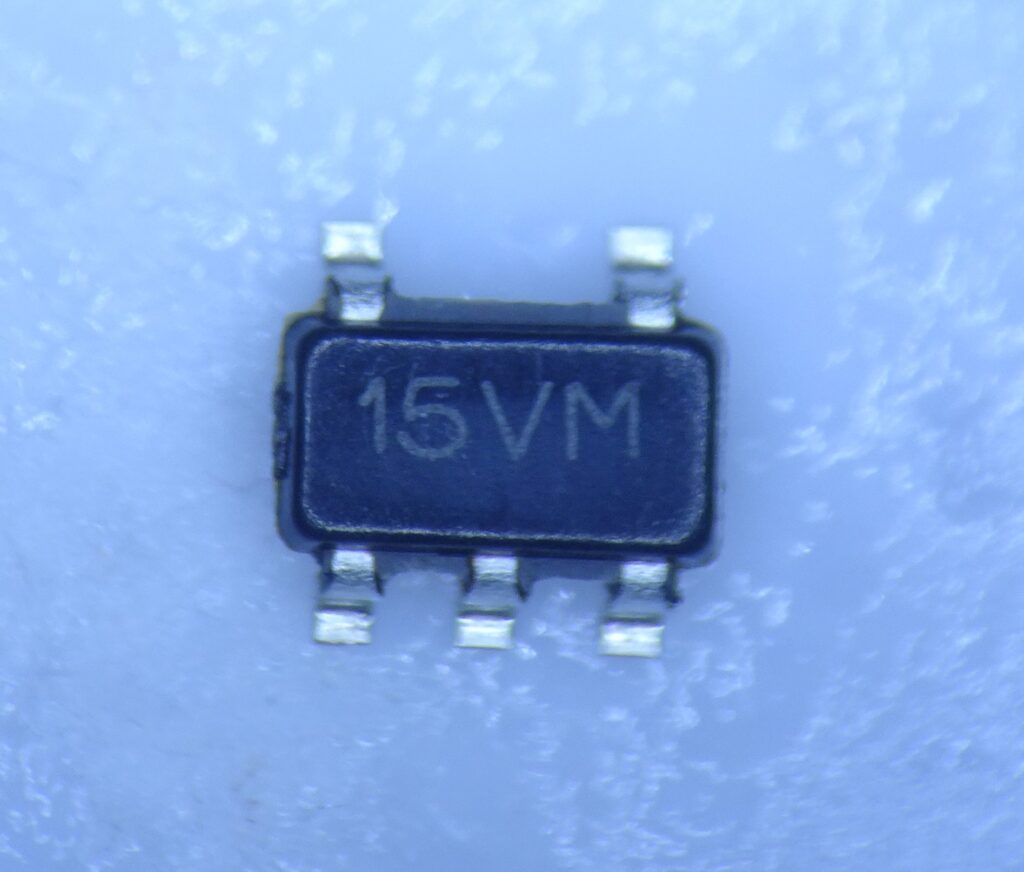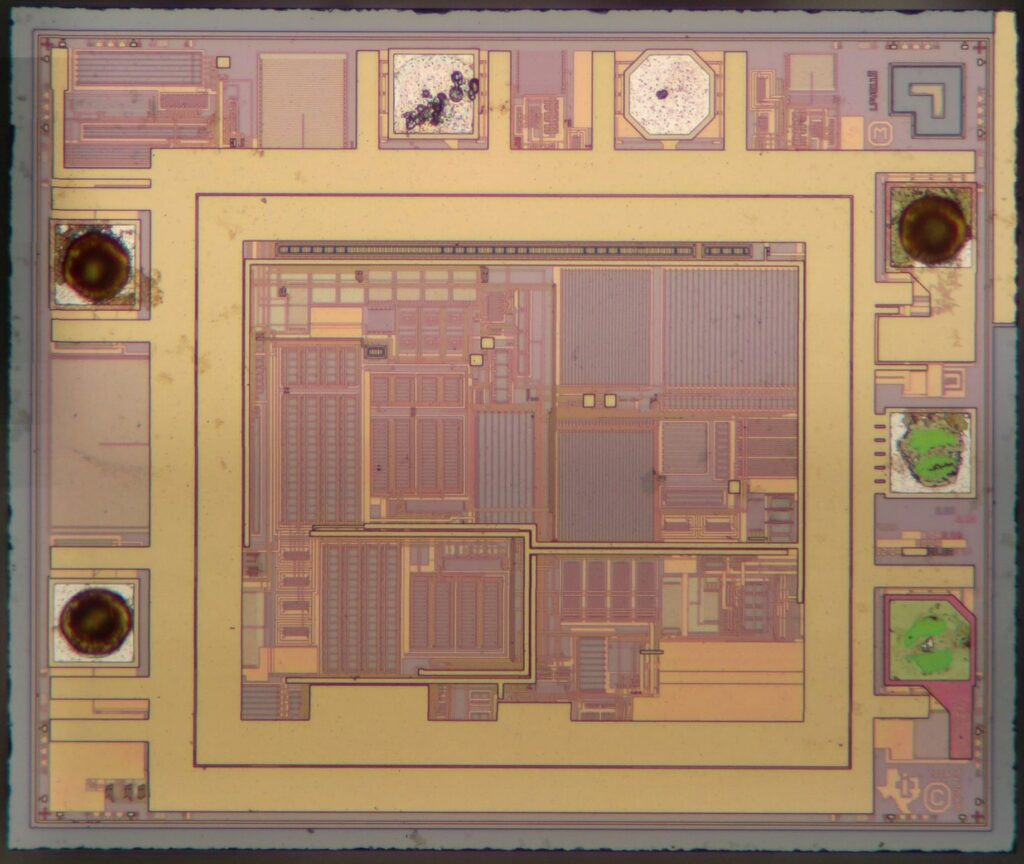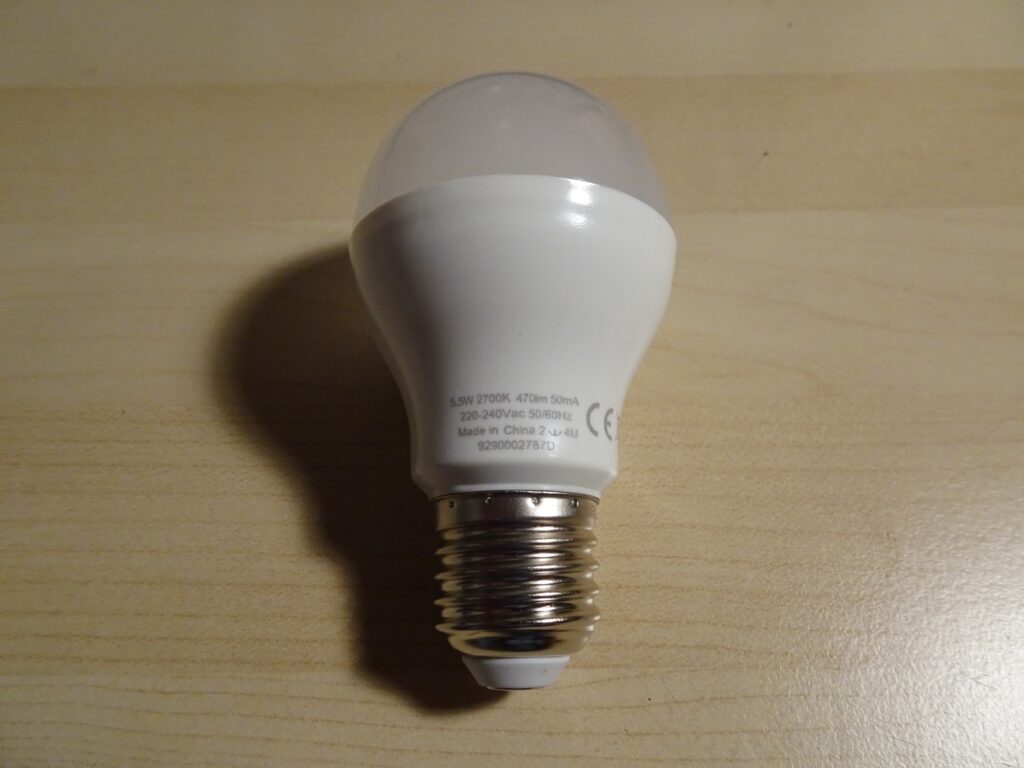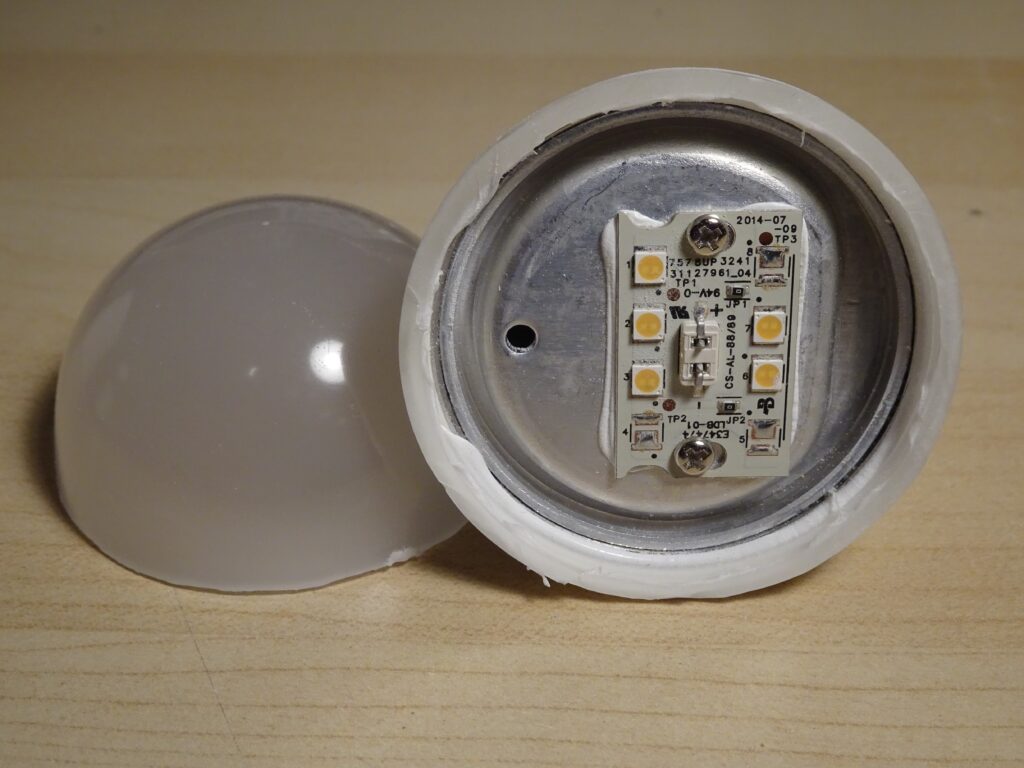Back in 2016, TI introduced a line of what they called “nanopower op amps”. Where older op amps like the 741 use around 2 mA, and more modern ones might reduce that to perhaps 100 uA or so, TI’s ultra-low power devices consume just a few hundred nA. This enables the design of things like smoke alarms and temperature monitors that can work for a decade on a single battery charge.

This is the LPV801, a single channel op amp that uses just 450 nA. It’s not very fast: with just 8 kHz of unity-gain bandwidth it’s useless for audio, but ideal for slow-moving things like temperature sensors. A dual version (LPV802) is also available, as are single and dual versions with reduced offset voltage (the ‘811 and ‘812 respectively).

Inside we find this neat little design. Five bond pads are bonded to the five pins on the package; two additional ones on the top row are used for testing. In the top-right corner is an L-shaped alignment marker, which is used during laser trimming.
Continue reading

